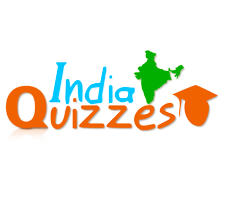1) The Himalayan Range is very rich in species diversity. Which one among the following is the most appropriate reason for this phenomenon?
A. It has high rainfall that supports luxuriant vegetative growth
B. It is a confluence of different bio-geographical zones
C. Exotic and invasive species have not been introduced in this region
D. It has less human interference
Answer : B.
2) The function of heavy water in a nuclear reactor is to
A. Slow down the speed of neutrons
B. Increase the speed of neutrons
C. Cool down the reactor
D. Stop the nuclear reaction
Answer : A.
3) The formation of ozone hole in the Antarctic region has been a cause of concern. What could be the reason for the formation of this hole?
A. Presence of prominent tropospheric turbulence; and inflow of chlorofluorocarbons
B. Presence of prominent polar front and stratospheric clouds; and inflow of chlorofluorocarbons.
C. Absence of polar front and stratospheric clouds; and inflow of methane and chlorofluorocarbons.
D. Increased temperature at polar region due to global warming
Answer : B.
4) The jet aircrafts fly very easily and smoothly in the lower stratosphere. What could be the appropriate explanation?
1. There are no clouds or water vapour in the lower stratosphere.
2. There are no vertical winds in the lower stratosphere.
Which of the statements given above is/are correct in this context?
A. 1 only
B. 2 only
C. Both 1 and 2
D. Neither 1 nor 2
Answer : C.
5) What is a zoom lens?
A. It is a lens having fixed focal length
B. It is a lens having variable focal length
C. It is a lens used in radio telescopes
D. None of the above
Answer : B.
6) What is the difference between a CFL and an LED lamp?
1. To produce light, a CFL uses mercury vapour and phosphor while an LED lamp uses semi-conductor material.
2. The average life span of a CFL is much longer than that of an LED lamp
3. A CFL is less energy-efficient as compared to an LED lamp.
Which of the statements given above is/are correct?
A. 1 only
B. 2 and 3 only
C. 1 and 3 only
D. 1, 2 and 3
Answer : C.
7) Which one of following reflects back more sunlight as compared to other three?
A. Sand desert
B. Paddy crop land
C. Land covered with fresh snow
D. Prairie land
Answer : C.
8) Which one of the following is the largest terrestrial wild animal?
A. Indian elephant
B. African elephant
C. Giraffe
D. White tiger
Answer : B.
9) Which one of the following processes in the bodies of living organisms is a digestive process?
A. Breakdown of proteins into amino acids
B. Breakdown of glucose into CO2 and H2O.
C. Conversion of glucose into glycogen.
D. Conversion of amino acids into proteins.
Answer : A.
10) Seawater (i.e. saltwater) freezes at:
A. the same temperature as fresh water.
B. at a slightly higher temperature than fresh water
C. at a slightly lower temperature than fresh water.
D. seawater does not freeze.
Answer : C.


